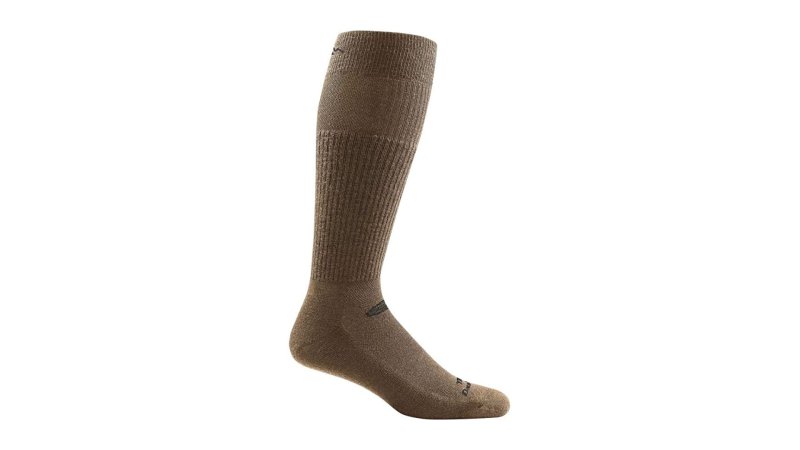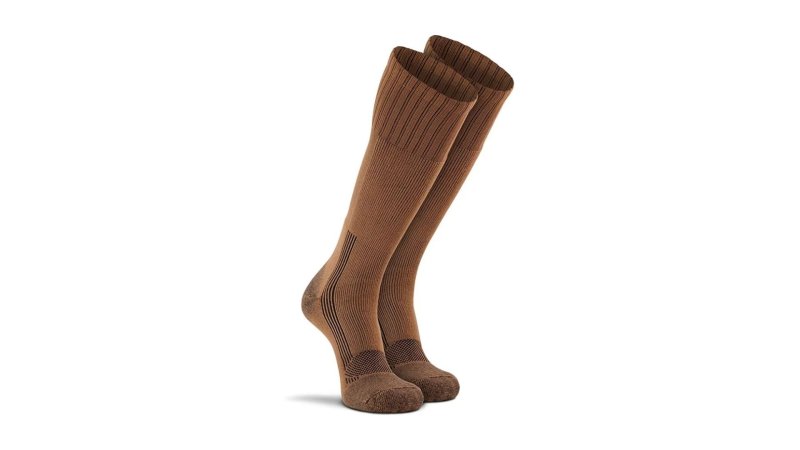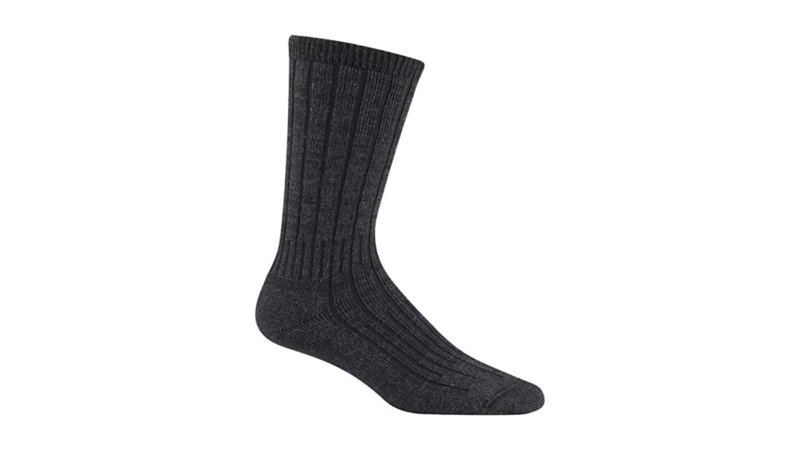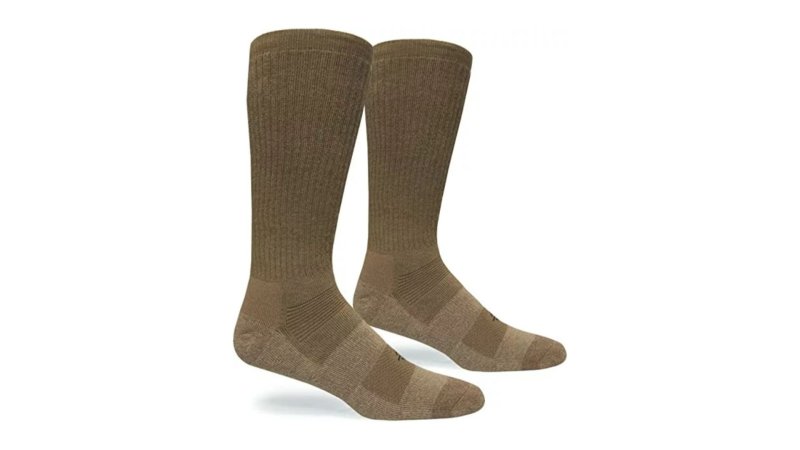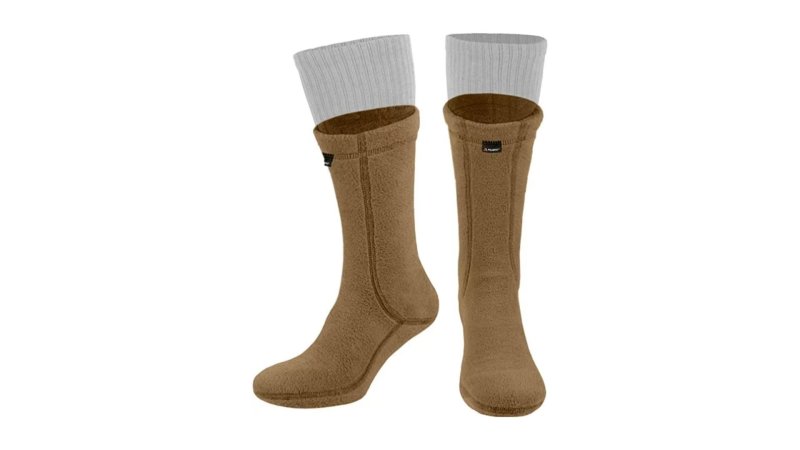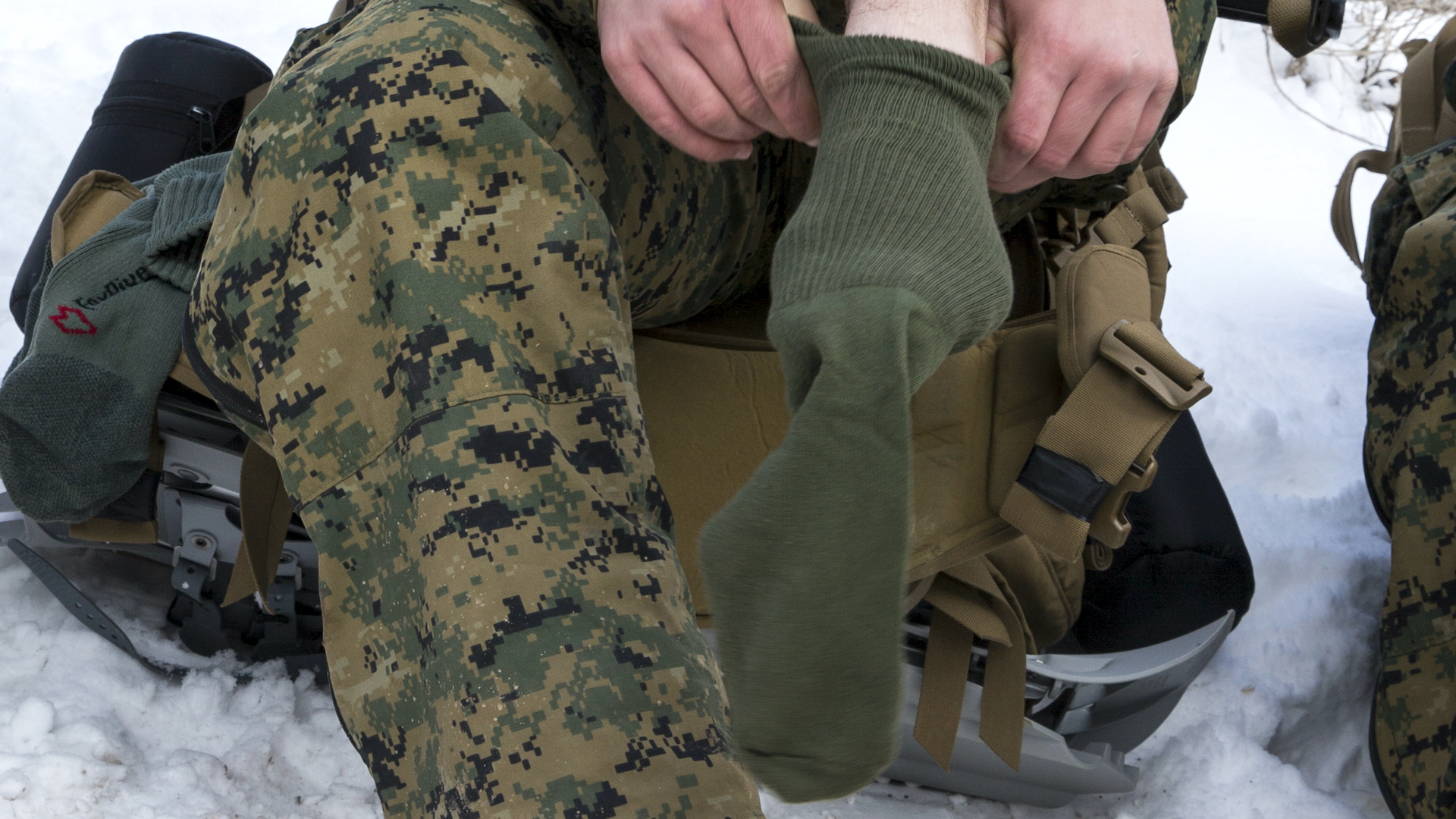

We may earn revenue from the products available on this page and participate in affiliate programs.
Military socks are an often overlooked aspect of the wide world of tactical gear. Blisters, soreness, and peeling skin are huge threats that can take even the most physically capable person down, and these socks help prevent that. Don’t settle for the five-pack of Defense Logistics Agency socks that you were issued in boot camp. As simple as fabric tubes closed at one end sound, the best military socks will actually keep you fighting on your feet for longer, so make sure that your feet are well-protected, no matter the situation.
- Best Overall: Darn Tough Tactical Mid Calf Light Cushion Sock
- Best Value: Fox River Military Wick Dry Maximum Medium Mid-Calf Boot Socks
- Best for Hiking: Wigwam Merino Silk Hiker
- Best for Hot Weather: Covert Threads Desert Military Boot Socks
- Best Cold Weather: 281Z Polartec Fleece Winter Socks
Best Overall
Darn Tough Lightweight Tactical Socks
Pros
- Comfortable
- Great moisture wicking
- Rock-solid warranty
Cons
- Not as breathable as others
- Top has a habit of rolling down
- Not suitable for extreme temperatures
Product Specs
- Country of manufacture: USA
- Length: On the calf
- Materials: Wool, nylon, lycra
Why It Made The Cut
- These all-weather socks will protect you from moisture, impact, and swelling to keep you comfortable whether you’re in garrison or the field.
Best Value
Fox River Wick Dry Military Boot Socks
Pros
- Half the price of other options
- Readily available at many PXs
- Good for a wide variety of environments
Cons
- Wears out easily
- Not as comfortable as other options
- Not Berry-compliant
Product Specs
- Country of manufacture: USA and others
- Length: On the calf
- Materials: Polypropylene, nylon, spandex
Why It Made The Cut
- Fox River makes solid socks for a solid price, coming in at roughly half the price of most other options.
Best for Hiking
Wigwam Merino Silk Hiker
Pros
- Excellent moisture wicking
- Fights blisters
- Very soft
Cons
- Too thick for hot weather
- Short sock may not be to everyone’s liking
- Not suitable for extreme temperatures
Product Specs
- Country of manufacture: USA
- Length: Crew
- Materials: Wool, nylon, silk, spandex
Why It Made The Cut
- These socks take advantage of silk to improve insulation, reduce blisters, and, overall, improve comfort. In addition, they’re from legendary brand Wigwam, which has been a household name in hiking for decades.
Best for Hot Weather
Covert Threads Desert Military Boot Socks
Pros
- Supremely breathable
- Does not retain sweat
- Tall enough to keep sand out
Cons
- Not suitable for moist environments
- Wears out fast
- Too thick for light duty use
Product Specs
- Country of manufacture: USA
- Length: Over the calf
- Materials: Cotton, acrylic, lycra, Coolmax, nylon, Ionic+
Why It Made The Cut
- The desert demands a sock that prioritizes breathability above all other characteristics, and this sock’s high-tech materials, open weave, and over-the-calf fit ensures your feet stay as cool as possible.
Best Cold Weather
281Z Polartec Fleece Winter Socks
Pros
- Extremely warm
- All but eliminate blisters
- Added boot cushion
Cons
- May require larger boots to properly fit
- May reduce footing stability
- Not Berry-compliant
Product Specs
- Country of manufacture: Ukraine
- Length: Crew
- Materials: Polartec
Why It Made The Cut
- Extreme cold calls for extreme socks, and these boot liners from 281Z are certainly extreme. Extremely warm.
Things to consider before buying military socks
Socks are crucial tools in keeping your feet uninjured and preventing any sort of temperature- or moisture-related injury. Because of this, they’re specially formulated to tackle the tasks, footwear, and hazards associated with military usage.
Materials
- Wool socks: Merino wool adds breathability, warmth, and comfort, but can make the socks itchy or overly hot in temperate climates.
- Cotton socks: Great for breathability, but extremely susceptible to moisture retention. Good for desert environments.
- Nylon and other synthetic fabrics: Formulated to address shortfalls with breathability, cushioning, or moisture wicking with natural fibers, but oftentimes introducing issues of their own.
Ventilation panels
Ventilation panels are mesh sections of the socks, specifically placed at points where heat and moisture build up on the human foot. These enhance breathability but can be vulnerable spots for holes to form.
Cushioning
Walking over rough terrain is a part of the military experience, and while shock-absorbing soles from Vibram are on many of the best military boots, having cushioned soles, heels, and toes definitely help.
Berry Amendment compliance
The Berry Amendment (USC, Title 10, Section 2533a) stated that defense procurement must prioritize American producers for many products, including textile goods. Berry-compliant products will almost always be made in the U.S., of American materials, so it’s a good gauge for people who want to buy American.
Height
Higher socks, particularly over-the-calf socks, are more resistant to sliding down your leg over a period of time, but they can be warmer than short socks due to just having more material. Additionally, some people don’t like having tall socks, not liking the feeling of them on their legs. Conversely, crew socks, which go just above the tops of an eight-inch boot, can have issues sliding down, but have less material and are better for those who find over-the-calf socks to be too much.
FAQs about military socks
Q: What are the best military socks?
A: The best military socks depend on your environment and usage. More cushioning is better for long-term heavy-duty usage, but thinner socks breathe better. Cotton is better for dry, hot environments, but not great if there’s a chance of water. This list will help you choose accordingly.
Q: Why do soldiers need specific socks?
A: Wet and dirty feet can literally kill you in a tactical environment. Wet socks cause peeled, rotting skin, and can facilitate the growth of fungus, germs, and other infections. Military boots are also taller than hiking boots, to keep out dirt, insects, and other debris, meaning that ankle socks are a no-go. Because of this, specialized socks are necessary.
Q: Do Marines wear black socks?
A: Always have, always will.
Final thoughts
Socks were one of the first things that senior Marines told me to upgrade. It’s one of the cheapest ways to enhance comfort in the field, and it’s saved me blisters, injuries, and soggy feet. The only change I’d make would be to award a contract for the standard-issue boot sock to one of these companies.
Methodology
All of these socks are socks I’ve worn while hiking, skiing, and in my duties as a Marine Reservist in the field and in garrison. They’ve been selected for how well they stand above other options that I’ve tested from other brands, and how much of an improvement they are over the standard DLA socks.
